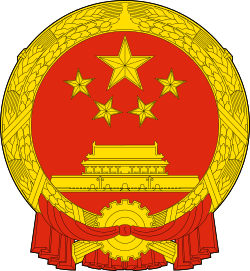One Country on Each Side

One Country on Each Side (simplified Chinese: 一边一国; traditional Chinese: 一邊一國; pinyin: yī biān yī guó; Pe̍h-ōe-jī: Chi̍t Pêng Chi̍t Kok) is a concept originated the Democratic Progressive Party government led by Chen Shui-bian, the former President of the Republic of China (2000–2008), regarding the political status of Taiwan. It emphasised that the People's Republic of China and the Republic of China (commonly known as "Taiwan") are two different countries, (namely "One China, one Taiwan"), as opposed to two separate political entities within the same country of "China". This is the position of the supporters of the Pan-Green coalition.
History
Chen used this phrase in an August 3, 2002, telecast to the annual conference of the World Federation of Taiwanese Associations meeting in Tokyo when he stated that it needs to be clear that "with Taiwan and China on each side of the Taiwan Strait, each side is a country."[1] His statements were made in Taiwanese as opposed to Mandarin and drew a barrage of criticism from the mainland Chinese press, which had previously shied away from the type of attacks it gave to Lee Teng-hui, who promoted a similar "special state-to-state relations". The United States also expressed serious concerns over this concept, as the U.S. felt that this concept appeared to have departed from Chen's earlier pledge of "Four Noes and One Without".[2]
See also
- Political status of Taiwan
- Two Chinas
- One-China policy
- Four Noes and One Without
- Four Wants and One Without
- Special non-state-to-state relations
References
- ↑ "Extracted text of the telecast relating to cross-strait relations" (in Chinese). Mainland Affairs Council of Republic of China. 2002-08-03.
台灣不是別人的一部分;不是別人的地方政府、別人的一省
(Táiwān búshi biéren de yībùfèn; búshi biéren de dìfāng zhèngfǔ, biéren de yī shěng) - ↑ Taiwanese Leader Condemns Beijing, 'One China' Policy

